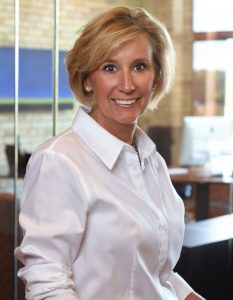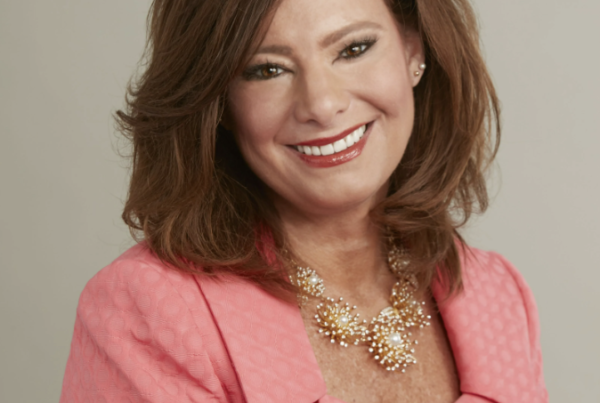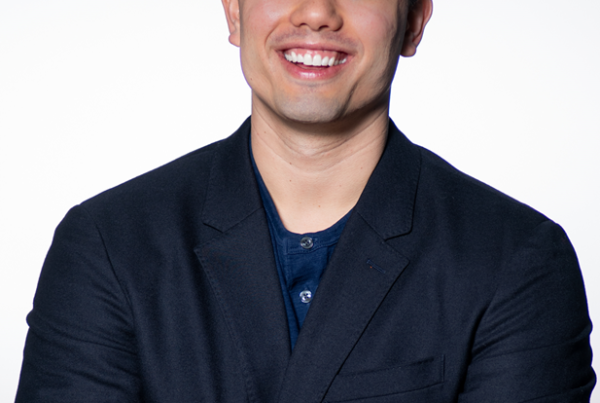Podcast: Play in new window | Download
Subscribe: RSS
What can 100 women working together accomplish in a community?

Wendy Steele
Wendy Steele understands the impact of generosity and has been encouraging philanthropy for most of her adult life. In 2001, she launched and led an innovative pass-through foundation called Impact100 which empowers women to fund transformational grants to the communities it serves across five broad focus areas: Arts & Culture, Education, Environment, Family and Health & Wellness.
She continues to support, mentor and advise Impact100 Chapters around the globe as her Impact100 Model has been replicated in many cities. By the end of 2019, Impact100 organizations had given away just short of $80 million to worthy non-profits and it continues to expand at an accelerated pace.
Her work in philanthropy is also noted in several books including, The Transformative Power of Women’s Philanthropy; Women, Wealth and Giving; Women’s Giving Circles; and The Right Sisters – Modern Women Inventors. PBS Television created an hour-long documentary entitled, Impact 100: Changing Lives, Strengthening Communities, which highlights the work of Impact100 Pensacola Bay Area, the world’s largest Impact100 organization.
In 2014, Wendy was awarded the Jefferson Award for Public Service for her work with Impact100. Considered the Nobel Prize for community service, this prestigious honor was founded in 1972 by Jacqueline Kennedy Onassis, Senator Robert Taft, Jr. and Samuel Beard to recognize individuals across the U.S. who improve communities through their service. In 2016, Wendy was named by Philanthropy Media as one of America’s Top 25 Philanthropy Speakers. She appeared on this list as Number 2, behind U2’s Bono, who holds the Number 1 spot.
In today’s conversation with us, Wendy Steele shares why she started Impact100 and how it works. She unpacks its evolution from the first group of women in her local city to becoming a movement of global proportion. We explore the demographics of women who participate, the power and impact of philanthropy and generosity, and what Impact100 members look for when choosing a non-profit to award a grant of $100,000+.
What We Discuss With Wendy Steele
- What is Impact100 and how is it structured
- The five focus areas they donate to and why
- The benefit of diversity in forming a local chapter and vetting charities to support
- How this model of impact is empowering women to own their power
- The health benefits of authentic generosity
- One of Wendy’s favorite stories of transformation and impact
Key Takeaways
Impact100 – what is it and how does it work?
Impact100 is a very simple model. You gather at least 100 women, they each donate $1000 and pool all that money together and announce to their local community how much money they have to give away.
The money is given out in grants of minimum $100,000 in one of five areas: education, environment, arts and culture, health and wellness or family. The idea being that there wouldn’t be a non-profit in that region whose mission wouldn’t qualify to apply for the grant.
The women design their own adventure. They can serve on a committee where they’ll learn to read an application, vet it, discuss it, and do a site visit. Ultimately there will be one chosen in each of the five areas and those will go before the membership who will vote on the winner. One woman, one donation, one vote.
It’s an annual commitment. The goal of every impact chapter is to have 500+ women so they’re giving away one $100,000 grant in each one of those five focus areas each year.
What inspired you to create the Impact100 initiative?
Whenever I would ask women to get involved, they would tell me all the reasons they couldn’t do it. They said they couldn’t justify paying a babysitter to come volunteer, or that they couldn’t take time away from work or they travelled too much.
The notion was that they didn’t have enough money or time. They weren’t enough. But I knew the women themselves needed to experience what it was like to go from being worried about their neighbors and community to knowing that there were solutions and that they could be a part of it.
I wrote down every objection I had heard from women, every barrier that they faced, and one by one tried to overcome them.
I started out thinking that I was creating something for a very specific community but I’ve since learned that there are women in communities all around the globe who feel the same way that those original women felt.
What inspired you to become a philanthropist?
I grew up learning that we are to leave the world a little better than we found it. We didn’t have great wealth; we simply had a commitment to do what we could right where we were. Sometimes it was time, talent or treasure. I always made time for community service or involvement.
When I move to a new city the best way I’ve ever found to get to know it, is to roll up your sleeves and volunteer. Find those non-profits that you like, the men or women who are your tribe and get busy.
For a long time, Impact100 was simply my pro bono work that I did on the side. Now, for the last several years, it has been my more-than-full-time vocation.
How did you fund this movement so you could do it full time?
Impact100 is considered a pass-through organization, so all the money gets paid out to grants in the year it was donated.
In 2016, I was contacted by Carrie Morgridge from the Morgridge Family Foundation. She had heard about Impact100 and after speaking with me, very generously started to support the work at Impact100 Council.
It’s an asset to have someone on your team who can see where the puck is going ahead of time.
The Impact100 Council exists to support and provide resources to all the Impact100 chapters.
Every book you’ll ever read on non-profit management says that an organization only run by volunteers is not sustainable. Impact100 chapters have been sustainable in part because of the support they get from the Impact100 Council through conferences, leadership development, and grant making.
How does it work structurally in terms of the Impact100 chapters vs the Impact100 Council?
I didn’t want any financial burden to be a barrier to keep women from being involved, so Impact100 is an open-source model that is available freely. Women can join a local chapter or if someone wants to start a chapter in their area, they contact me and I walk them through some interactive learning modules to help equip them to be successful.
There are no affiliate fees or membership dues as it relates to the chapter and the Council. It was a very intentional decision based on my desire to reduce the barriers to entry. Other people might want have different outcomes so my advice is to design your structure to best support your outcomes. Begin with the end in mind and then backtrack.
Do the women have previous experience or do you train them to properly vet grant applications?
If you look at our membership across the US, approximately half of our members had never written a check to a single charity for $1000 or more prior to joining Impact100. That was not a reflection of their capacity but rather a reflection of their experience.
The other half are what I call seasoned philanthropists. They’ve written checks for $1000 or more in the past and they see Impact100 as an addition to their portfolio of giving.
When those new and seasoned philanthropists are all sitting around the table to discuss a grant application, the conversation is robust and multi-dimensional.
Our newly minted philanthropists may know someone firsthand who experienced the very issue that they’re looking to eradicate. They may have received those services themselves. They know the community, the feet on the street, which bus line it has to be on, and which community partner has to be involved in order for it to be successful.
On the other hand, our seasoned philanthropists have a view from the mountaintop – what is state of the art, and what are new ways to make this happen. We really democratize the conversation because everyone has a voice.
It’s powerful when you allow women to be who they really are – when you invite them into this space that they didn’t think was open to them or that they didn’t realize was so deep and meaningful.
What is the demographic of the women who participate in the Impact100?
Our goal is to be as diverse as that community allows. So we want to be a full reflection of the community, including women in their late 20s to women in their late 80s. That said, the sweet spot in terms of age tends to be from the mid-40s to mid-60s. Part of that is economic and part of that is time management.
We do offer enticements for the younger generation, and we often offer some form of scholarship or young philanthropist program.
Philanthropy or generosity is a muscle that we have to learn to use, especially for women. There are a lot of misconceptions about money. As women, we don’t talk enough about money. Women are not comfortable with money and don’t know if they’ll have enough.
So we do a lot of work to help women understand their full power and step into that power. Not just financially, but intellectually, emotionally, and analytically. Women bring a lot to the table.
What are your thoughts on generosity and how it inspires us to be more generous?
We are biologically wired to give. It’s based on our bodies. Generosity is contagious. You don’t actually have to be generous to feel the effects. You can see someone who is generous or hear about someone who is generous and your body will produce oxytocin which is known as the love or trust hormone.
So you will be physically encouraged to do more. The more oxytocin you produce the better off you are, because one thing that cannot coexist in our system with oxytocin is cortisol which is the stress hormone. If you google any health problem, any ache or pain, one of the top causes you find for any ailment is stress.
You can’t be stressed when you’re generous. The reverse is also true. You can’t be generous if you’re stressed. The cortisol will choke out the oxytocin.
If you’re having a tough week or feeling stressed, start thinking about being generous and then go act upon it. You will feel the tension melt away, you’ll feel better, and it will realign your thinking.
In terms of the authenticity of generosity, if we’re generous to impress our neighbor, to make ourselves look good or to promote themselves, our bodies know the difference and it doesn’t produce oxytocin. It has to be authentic generosity.
The more intentional we can be about what we do when we’re giving, the more we’ll see the benefit and others will see and feel the benefit too.
Be intentional. Instead of just signing your name on the pledge card that you feel arm-wrestled into, or tossing a donation out of obligation, every time you give, be really intentional about soaking it in.
We know from data that the best way for children to grow up to be generous adults is by seeing it modeled in the people around them. It will also have more sticking power if you actually talk about it with them. For example, “I am buying girl scout cookies because they’re good AND they do good. I am volunteering at the homeless shelter because I see the need, I’m connected to the solution, and this is what I can do right now.”
We don’t like to talk about money and giving because it feels uncomfortable or bragging but it’s not. You really want to have these conversations with the younger people in your firm, your neighborhood, and so forth, so they can see what generosity looks like and so they understand that it should be part of every budget, every family, and every person’s walk through life. It’s serving them as much as by the ripple effect in the community they support.
Can you share one of your favorite stories of a charity that you gave to?
The very first grant we gave out, we had 123 women give $1000, so we had $123,000 to grant. It went to a dental clinic for the homeless and uninsured. They had five stations and needed to replace all five dental chairs. Our grant would allow them to do it. Impact100 members were invited to see the before and after.
We talk about transformation and sustainability – two key elements when we’re looking at any grant proposal. This had both.
It turns out that a family foundation heard about our grant of $123,000. They knew the dental clinic needed more than just new equipment. So they gave a grant to put in new carpeting, fresh paint and some office furniture.
When we arrived, they had easels with before and after pictures from their patients. Black teeth and missing teeth where they didn’t want to smile, to a full beautiful white smile. The pictures were startling. Allowing these people the dignity of opportunity for employment and lifestyle – it was transformational from the start.
Then they showed us their calendar and it was full with dentists who were offering to volunteer. Their original dental equipment was donated by a dentist who upgraded his own equipment, and it was about 20 years old.
The useful life of dental equipment is about 20 years so the equipment was unreliable, inconsistent and a little dangerous. None of the other dentists in the community would come and do serious procedures on people without confidence in the equipment. Now, with new equipment not only could they serve their patients better, they also had all these dentists who were coming in.
That’s what called the unintended consequence, or the impact of impact.
When we come together, we can do so much more than the wealthy of us could do by ourselves.
Episode Resources
Connect With Wendy Steele and Impact100
- Website: Impact100council.org
- Facebook: https://www.facebook.com/Impact100council
- Instagram: https://www.facebook.com/Impact100council
- Twitter: https://twitter.com/Impact100Global
- Twitter: https://twitter.com/Impct100Council
- Facebook: https://www.facebook.com/wendy.h.steele
- LinkedIn: https://www.linkedin.com/in/wendysteele
- Twitter: https://twitter.com/WendySteele
Listen on Apple Podcasts, Spotify, Pandora or Stitcher.
Did You Enjoy The Podcast?
If you like this episode let us know! Reviews for the podcast on iTunes are greatly appreciated. This helps us reach more entrepreneurs seeking to make a positive impact in the world. If you received value from this episode, it would mean so much if you could take a moment and leave your 5-star rating and review. You can do that by visiting here. Thank you! Together we can make a difference!
Additional Episodes You May Like
- 350: Troy Bussmeir: The Joy of Generous Giving
- 314: Eva Yazhari: Bringing Hope and Finances to Rural India and East Africa
- 312: Jennifer Smith: Planting Trees and Protecting Biodiversity in the Rainforest
- 302: Darya Henig Shaked: Leveling the Playing Field for Women Entrepreneurs
- 294: James Lenhoff: Transforming Our View Of Money and Generosity
- 272: Martin Barrett: Increase Your Marketing ROI Through Shared Generosity
- 221: Tracy David: An Entrepreneurial Approach To Building Confidence In Women
- 033: Dr. Jenny Lopez: Women Add Value










